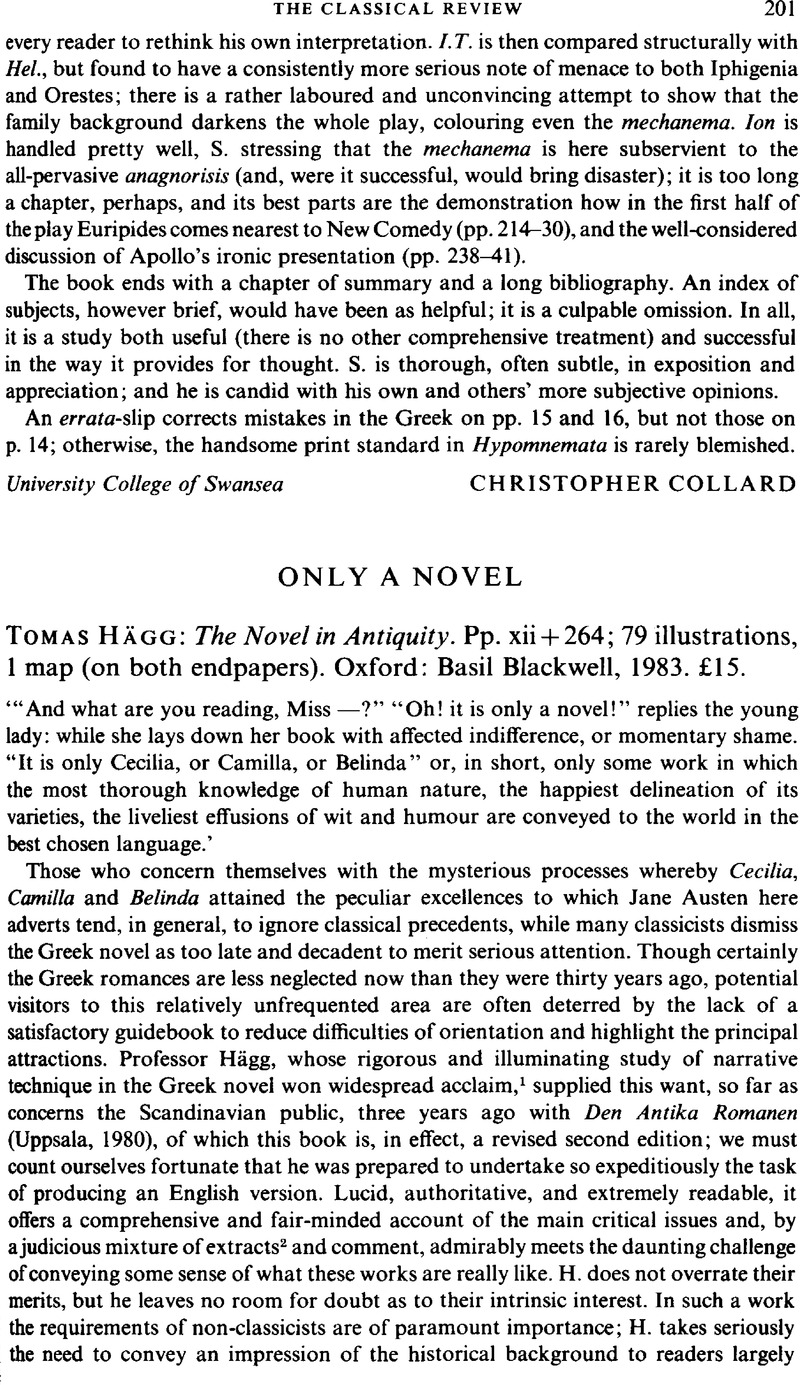No CrossRef data available.
Article contents
Only a Novel - Tomas Hägg: The Novel in Antiquity. Pp. xii + 264; 79 illustrations, 1 map (on both endpapers). Oxford: Basil Blackwell, 1983. £15.
Published online by Cambridge University Press: 16 February 2009
Abstract

- Type
- Reviews
- Information
- Copyright
- Copyright © The Classical Association 1984
References
1 Narrative Technique in Ancient Greek Romances (Stockholm, 1971).Google Scholar
2 Translated by several hands, and constituting a trailer for a collection of new English translations of the ancient novels to be published by the University of California Press under the editorship of Professor B. P. Reardon.
3 There is an error in the caption to the fragment of Lollianus reproduced in Fig. 26 (p. 92): in addition to the Cologne papyrus we have P. Oxy. 1368 (identified by M. D. Reeve: see further Henrichs, A., Die Phoinikika des Lollianos [Bonn, 1972], 8 ff.)Google Scholar. The survival of fragments from two copies is of some significance in judging the popularity of this sensational narrative.
4 It has often been suggested (and Hägg himself (p. 97) seems in some ways attracted by the idea) that the Dream of Nectanebus (Pack 22476, Wilcken UPZ i No. 81, Lavagnini, EGFP 37–42), an evident version of an Egyptian original, is somehow relevant to this question. But though the copyist lost interest at the point where the craftsman engaged by Nectanebus caught sight of the loveliest girl he had ever seen, it is clear enough that the end of the story will not be love and marriage, but the Persian conquest of Egypt and the loss of Nectanebus' throne. This is not romantic fiction but a theodicy, justifying the failure of Egypt's gods to defend the land against the Persians; in style, content and intention there is a great gulf between this semiliterate piece and Chariton's elegant composition.
5 The extent of this (possibly unfinished) novel (54 books– 1090 pages in the Penguin translation by Edward G. Seidensticker) should be borne in mind by those who are sceptical about the reported length of the lost works of Iamblichus (Babyloniaca in 16 or 39 books) and Antonius Diogenes (Marvels beyond Thule in 24 books). Murasaki's own view of the art of fiction may be found in Book 25.


